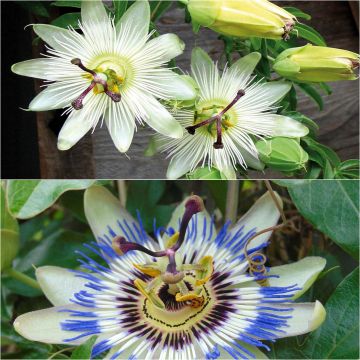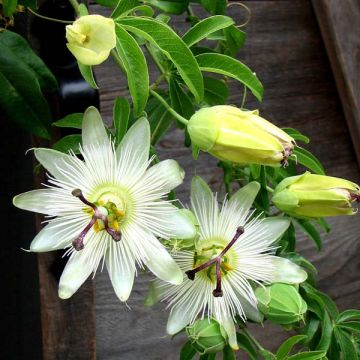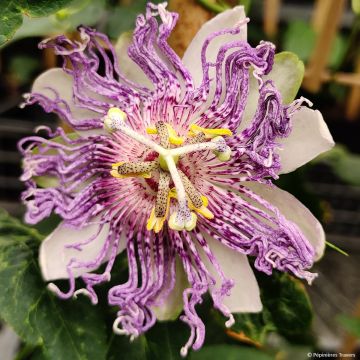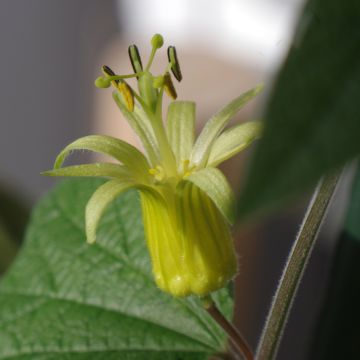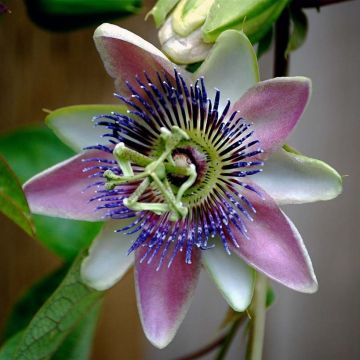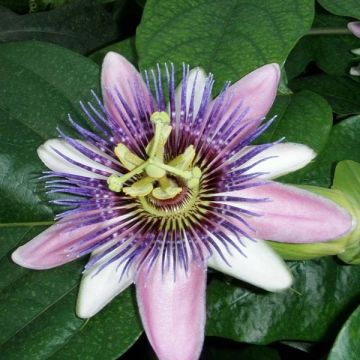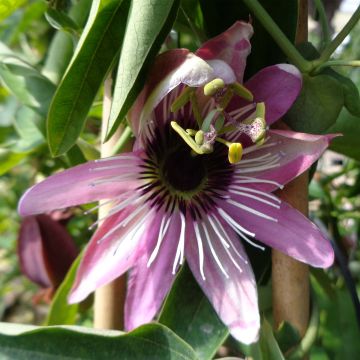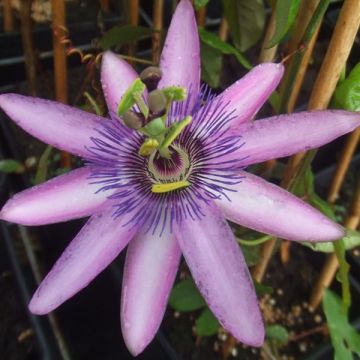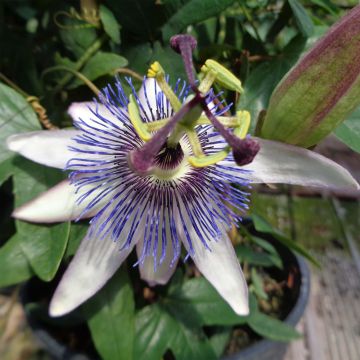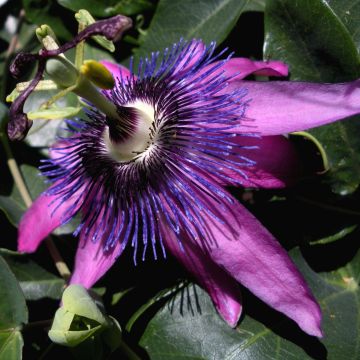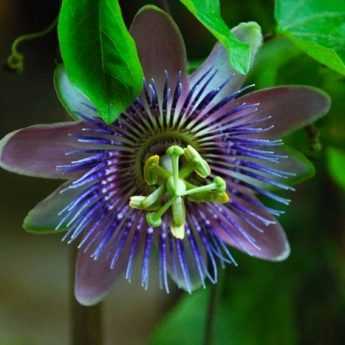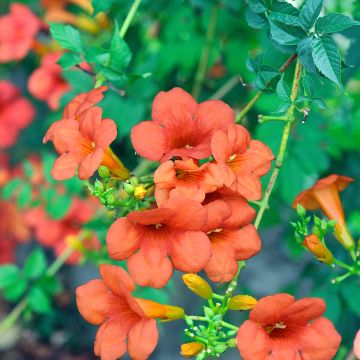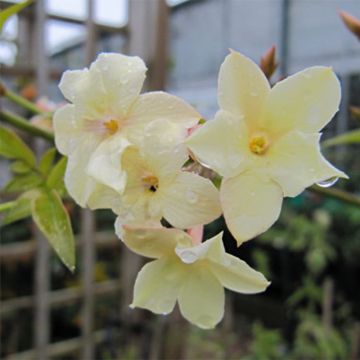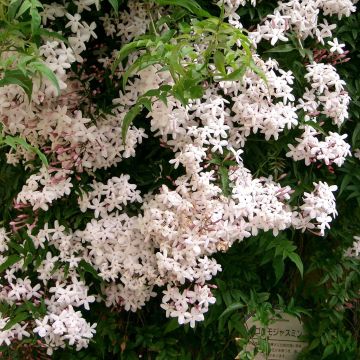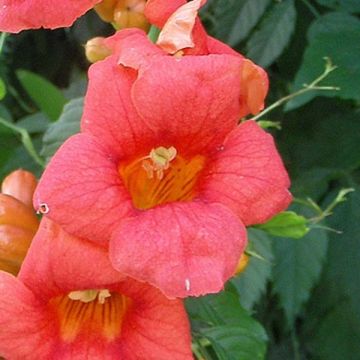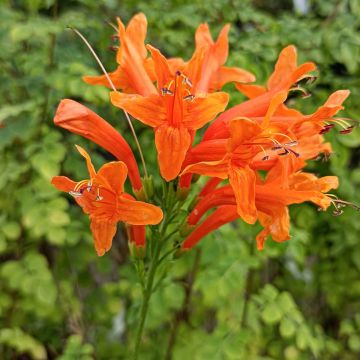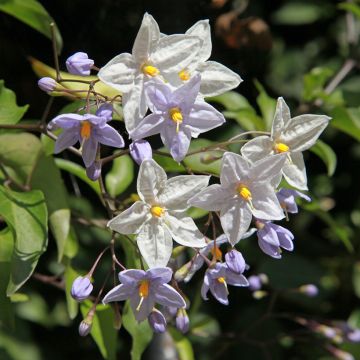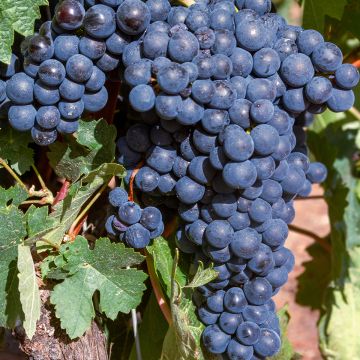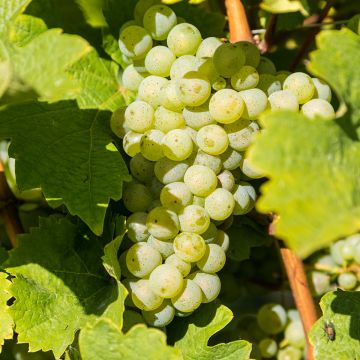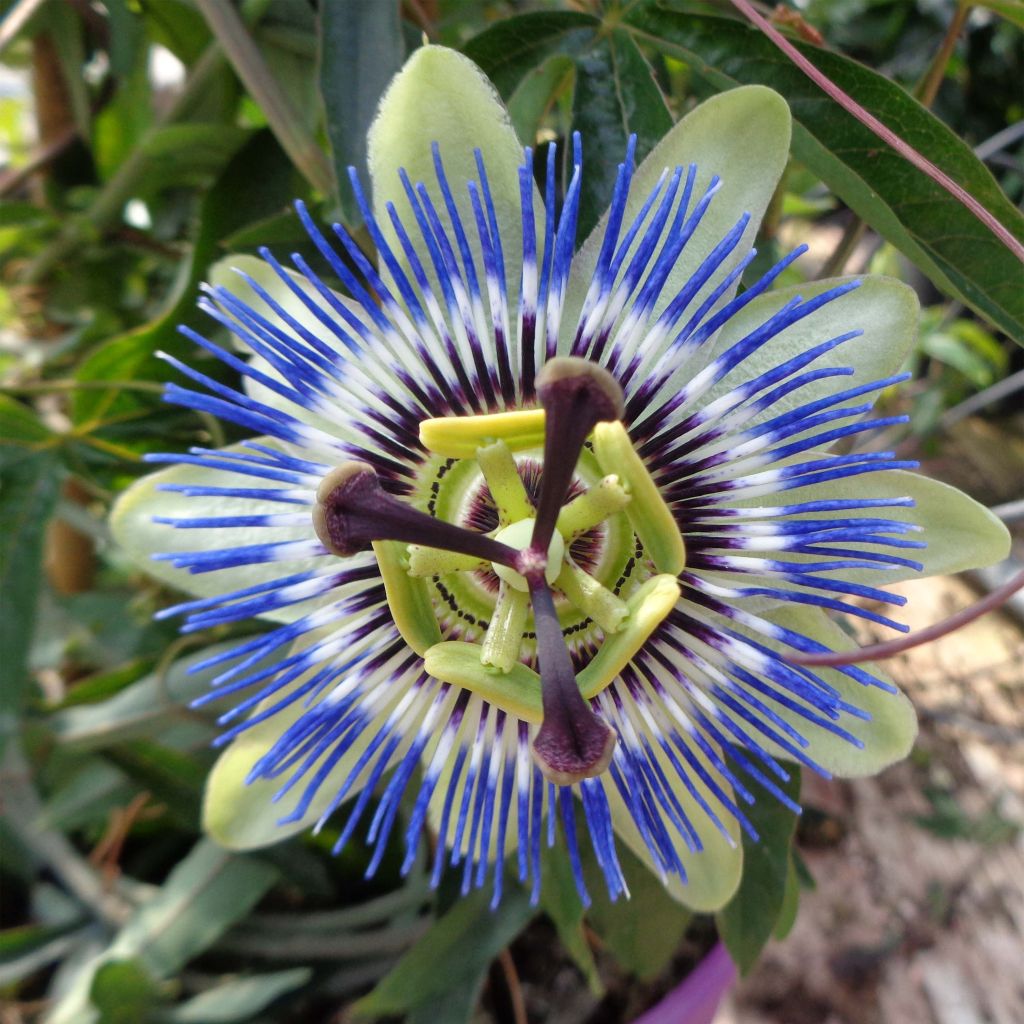

Passiflora caerulea- Passion Flower
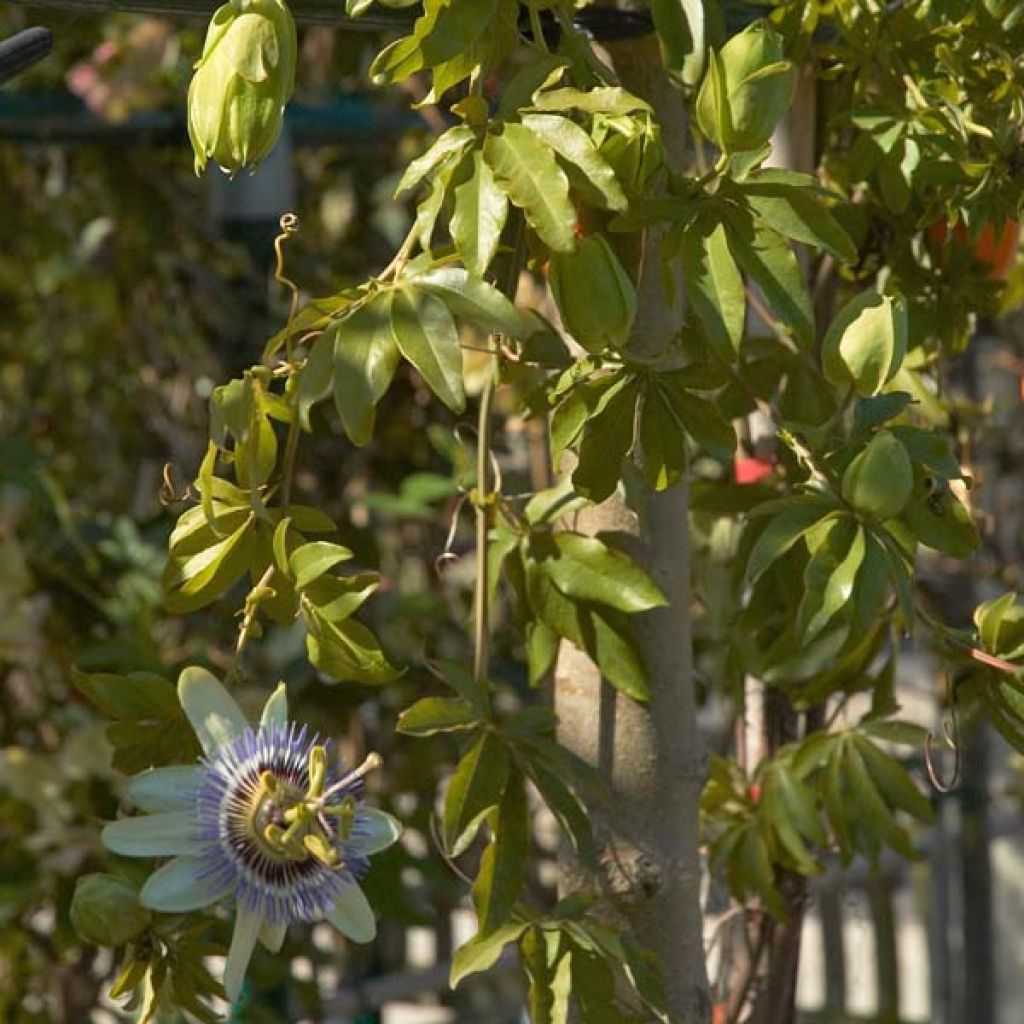

Passiflora caerulea- Passion Flower
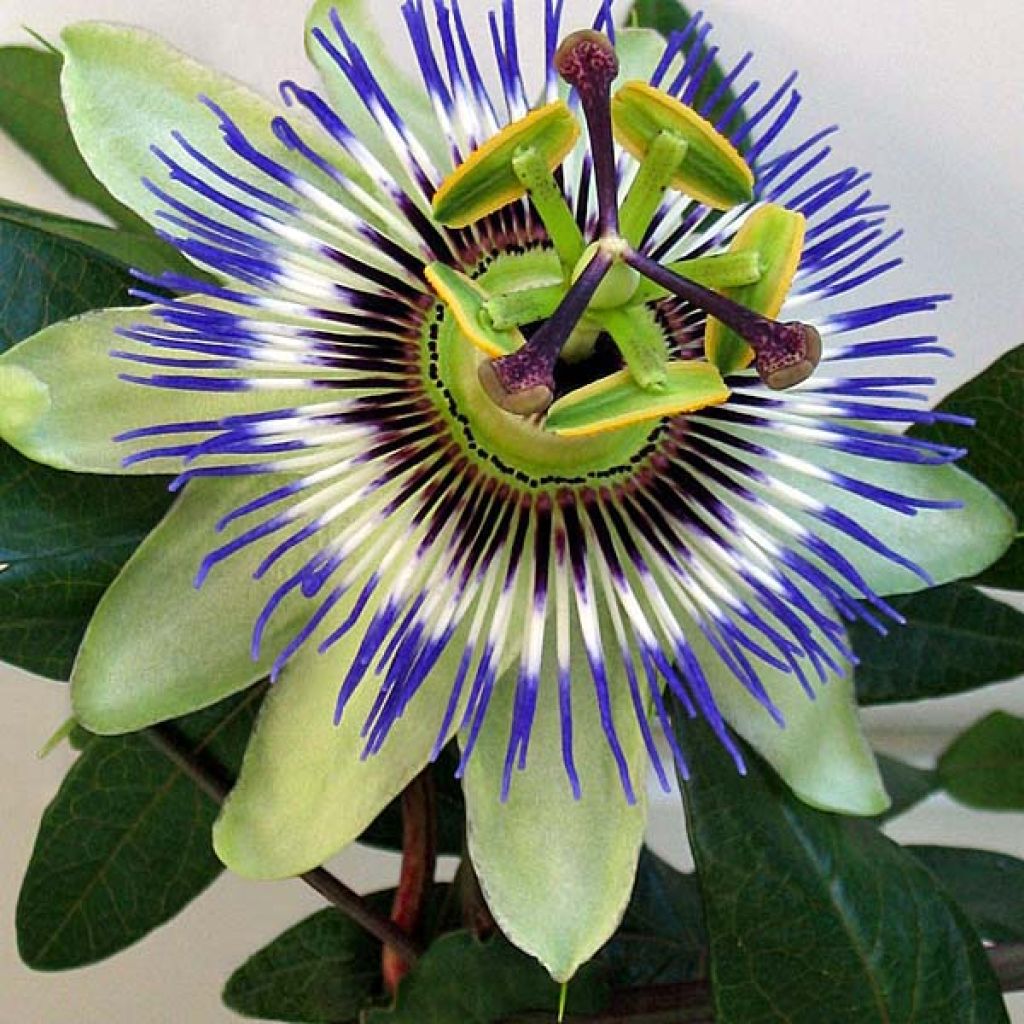

Passiflora caerulea- Passion Flower
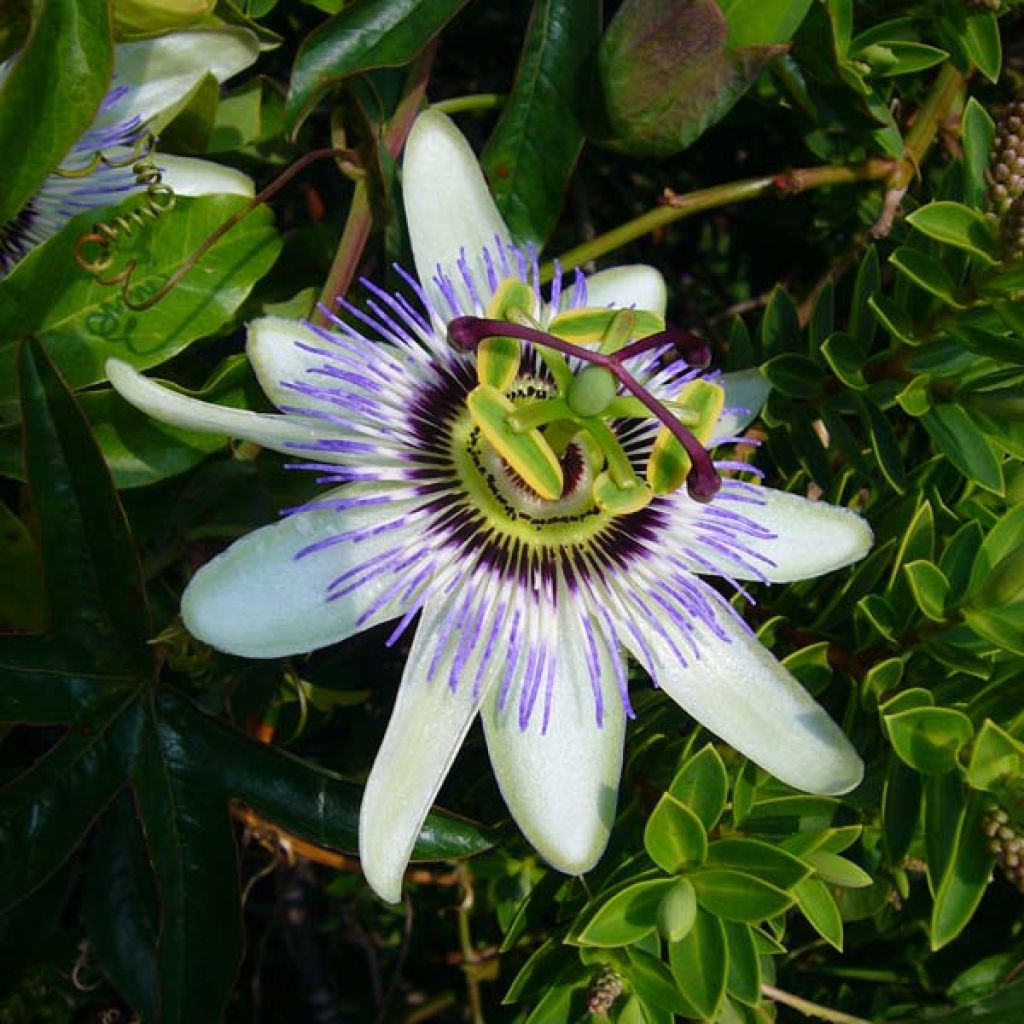

Passiflora caerulea- Passion Flower
Passiflora caerulea- Passion Flower
Passiflora caerulea
Blue Passionflower, Common Passionflower
Home or relay delivery (depending on size and destination)
Schedule delivery date,
and select date in basket
This plant carries a 6 months recovery warranty
More information
We guarantee the quality of our plants for a full growing cycle, and will replace at our expense any plant that fails to recover under normal climatic and planting conditions.
Does this plant fit my garden?
Set up your Plantfit profile →
Description
The Passiflora Caerulea is undoubtedly the hardiest of ornamental passion flowers. This vigorous South American species is also known as the blue passionflower, due to the bluish colour of its flowers which are curiously organised. Capable of covering entire walls and climbing trees, this vine-plant will be appreciated for its long flowering period with a sweet citrus fragrance, followed by pretty orange fruits that are edible but have no taste value. Impractical in hot climates, this passionflower will appeal more to gardeners who can appreciate its exotic charm without fearing being overwhelmed by its beautiful exuberance.
The Passiflora caerulea belongs to the family of Passifloraceae, which includes about 400 species of more or less evergreen ramblers, mostly native to tropical regions of South America. This botanical species is distinguished by its good resistance to frost (-12°C (10.4°F) for an adult specimen) and to summer drought. Not demanding in terms of soil, it can adapt to any well-drained and sufficiently deep soil, whether acidic, neutral or alkaline. Almost evergreen in hot climates will lose their foliage, and their stems may be frozen in winter in cooler areas. It can be grown in open ground there, provided it is exposed to the south or west and mulched in winter. Its robust stump will then produce new vigorous shoots in spring.
The long, flexible and angular stems of the blue passionflower can exceed 7 m (23ft) in length, its growth is very rapid in fertile and moist soil, and its rooting is deep. The green branches of this liana cling to any support by means of very strong tendrils and are adorned with wide leaves 6-8 cm (2-3in) thick, divided into 5 lobed palmates, dark green. Its slightly fragrant flowering is continuous, from June-July until the first frost. The large flowers measuring 8 cm (3in) in diameter are composed of 3 large oval bracts, pale green in colour, topped with 5 white-blue petals, themselves topped with a double crown of tricoloured filaments, bluish-violet on the periphery, white in the centre and purple at the base. In the centre of the flower, there is a column (the pistil) surrounded by 5 stamens ending in small 'hammers'. The fragrance of the flowers is tart and sweet, and they are highly visited by pollinating insects. Ovoid and soft fruits, the size of a small egg, orange in colour, follow the flowers. When raw and still green, the fruit, which contains cyanide acid, is toxic. Hidden under a thick skin are the seeds coated with a reddish pulp, which is not very juicy or tasty. Some birds consume them and thus contribute to the plant's dispersal in the garden.
Widely planted in old southern gardens, the blue passionflower is a vigorous rambler that needs to be controlled in hotter climates: its vigour is such that it becomes almost impossible to make it disappear once it is well established. However, severe pruning in early spring and regular removal of fruits can help limit its spread. This climbing plant, which grows without assistance and watering once established, works wonders on wire fences or when allowed to conquer an old tree. For example, combine it with a Chinese wisteria, a terniflora clematis, or a Polygonum aubertii: these are all equally vigorous climbers that keep it in check while extending the flowering period along a large fence grid.
Report an error about the product description
Passiflora caerulea- Passion Flower in pictures
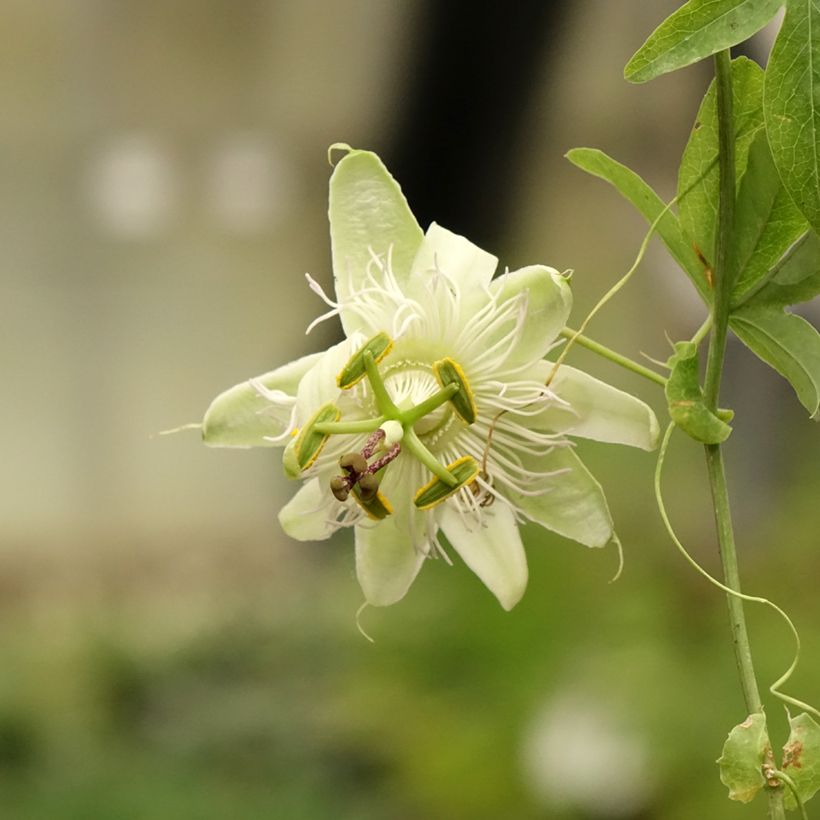

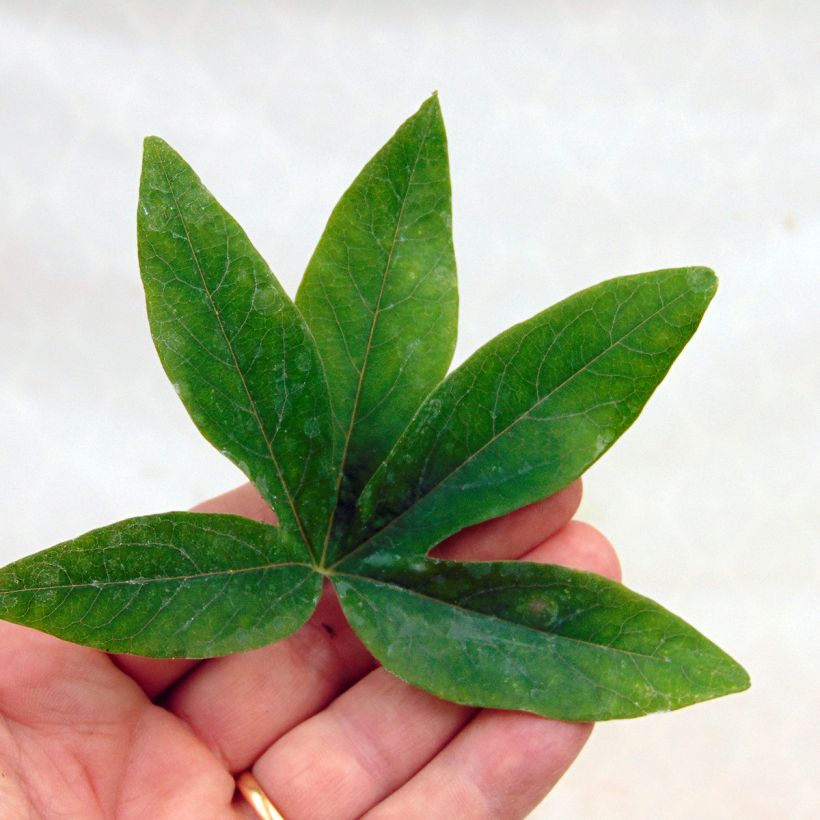

Plant habit
Flowering
Foliage
Botanical data
Passiflora
caerulea
Passifloraceae
Blue Passionflower, Common Passionflower
South America
Other Passionflowers
View all →Planting and care
The passionflowers are quite delicate to grow as they often fear frost. The P. caerulea, undoubtedly the most resistant of the genus (along with the perennial Passiflora incarnata), has the immense advantage of withstanding frost up to about -12°C (10.4°F) once mature and well established. It can, therefore, remain in the ground in a sheltered position. Take care to mulch it well before the first frosts. In case of severe frost, cut it back to the ground in early spring. Otherwise, prune it severely as the flowers appear on the year's shoots. It won't hold it against you: with rapid growth, it can grow up to 4m (13ft) per year. Apart from its fear of extreme cold, it is sturdy and adapts easily to sunny conditions. It prefers poor, well-drained, deep, loose soil and tolerates limestone well. This passionflower is extremely vigorous in mild climates and can be a bit invasive, especially through spontaneous seedlings. Its tolerance to summer drought is excellent.
Planting period
Intended location
Care
Planting & care advice
-
, onOrder confirmed
Reply from on Promesse de fleurs
Similar products
Haven't found what you were looking for?
Hardiness is the lowest winter temperature a plant can endure without suffering serious damage or even dying. However, hardiness is affected by location (a sheltered area, such as a patio), protection (winter cover) and soil type (hardiness is improved by well-drained soil).

Photo Sharing Terms & Conditions
In order to encourage gardeners to interact and share their experiences, Promesse de fleurs offers various media enabling content to be uploaded onto its Site - in particular via the ‘Photo sharing’ module.
The User agrees to refrain from:
- Posting any content that is illegal, prejudicial, insulting, racist, inciteful to hatred, revisionist, contrary to public decency, that infringes on privacy or on the privacy rights of third parties, in particular the publicity rights of persons and goods, intellectual property rights, or the right to privacy.
- Submitting content on behalf of a third party;
- Impersonate the identity of a third party and/or publish any personal information about a third party;
In general, the User undertakes to refrain from any unethical behaviour.
All Content (in particular text, comments, files, images, photos, videos, creative works, etc.), which may be subject to property or intellectual property rights, image or other private rights, shall remain the property of the User, subject to the limited rights granted by the terms of the licence granted by Promesse de fleurs as stated below. Users are at liberty to publish or not to publish such Content on the Site, notably via the ‘Photo Sharing’ facility, and accept that this Content shall be made public and freely accessible, notably on the Internet.
Users further acknowledge, undertake to have ,and guarantee that they hold all necessary rights and permissions to publish such material on the Site, in particular with regard to the legislation in force pertaining to any privacy, property, intellectual property, image, or contractual rights, or rights of any other nature. By publishing such Content on the Site, Users acknowledge accepting full liability as publishers of the Content within the meaning of the law, and grant Promesse de fleurs, free of charge, an inclusive, worldwide licence for the said Content for the entire duration of its publication, including all reproduction, representation, up/downloading, displaying, performing, transmission, and storage rights.
Users also grant permission for their name to be linked to the Content and accept that this link may not always be made available.
By engaging in posting material, Users consent to their Content becoming automatically accessible on the Internet, in particular on other sites and/or blogs and/or web pages of the Promesse de fleurs site, including in particular social pages and the Promesse de fleurs catalogue.
Users may secure the removal of entrusted content free of charge by issuing a simple request via our contact form.
The flowering period indicated on our website applies to countries and regions located in USDA zone 8 (France, the United Kingdom, Ireland, the Netherlands, etc.)
It will vary according to where you live:
- In zones 9 to 10 (Italy, Spain, Greece, etc.), flowering will occur about 2 to 4 weeks earlier.
- In zones 6 to 7 (Germany, Poland, Slovenia, and lower mountainous regions), flowering will be delayed by 2 to 3 weeks.
- In zone 5 (Central Europe, Scandinavia), blooming will be delayed by 3 to 5 weeks.
In temperate climates, pruning of spring-flowering shrubs (forsythia, spireas, etc.) should be done just after flowering.
Pruning of summer-flowering shrubs (Indian Lilac, Perovskia, etc.) can be done in winter or spring.
In cold regions as well as with frost-sensitive plants, avoid pruning too early when severe frosts may still occur.
The planting period indicated on our website applies to countries and regions located in USDA zone 8 (France, United Kingdom, Ireland, Netherlands).
It will vary according to where you live:
- In Mediterranean zones (Marseille, Madrid, Milan, etc.), autumn and winter are the best planting periods.
- In continental zones (Strasbourg, Munich, Vienna, etc.), delay planting by 2 to 3 weeks in spring and bring it forward by 2 to 4 weeks in autumn.
- In mountainous regions (the Alps, Pyrenees, Carpathians, etc.), it is best to plant in late spring (May-June) or late summer (August-September).
The harvesting period indicated on our website applies to countries and regions in USDA zone 8 (France, England, Ireland, the Netherlands).
In colder areas (Scandinavia, Poland, Austria...) fruit and vegetable harvests are likely to be delayed by 3-4 weeks.
In warmer areas (Italy, Spain, Greece, etc.), harvesting will probably take place earlier, depending on weather conditions.
The sowing periods indicated on our website apply to countries and regions within USDA Zone 8 (France, UK, Ireland, Netherlands).
In colder areas (Scandinavia, Poland, Austria...), delay any outdoor sowing by 3-4 weeks, or sow under glass.
In warmer climes (Italy, Spain, Greece, etc.), bring outdoor sowing forward by a few weeks.



































